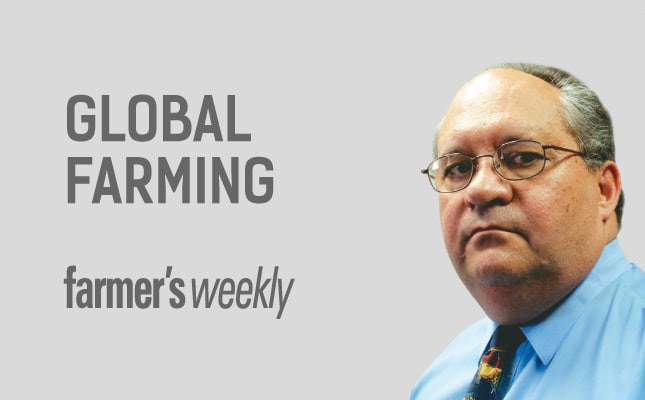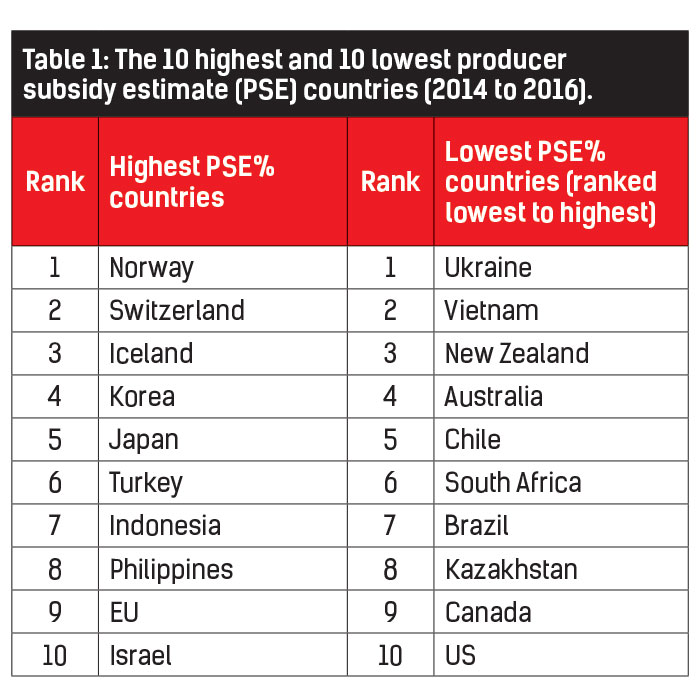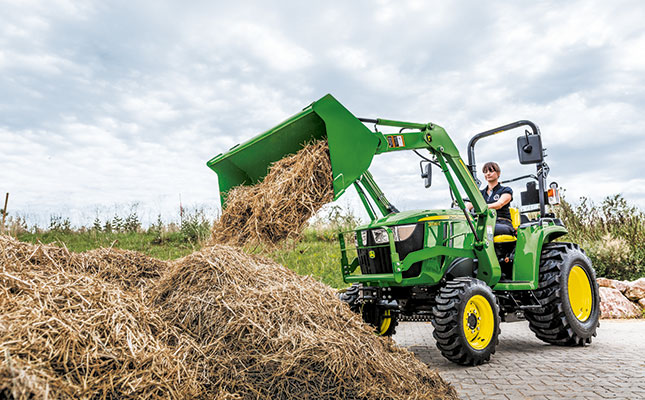
Producer subsidies enable countries to sell agricultural products at prices below production cost. Support to agriculture is measured by the Producer Subsidy Estimate (PSE) and quoted as a percentage of gross farm receipts.
READ How income and price changes affect demand
The latest figures from the Organisation for Economic Development (OECD) show that in 2016, 16% of gross farm receipts in the 50 countries surveyed were due to policies that support farmers.
This is down from the 30%+ recorded between 1995 and 1997.
In developing countries, by contrast, support increased from very low levels to 14% between 2014 and 2016. This was due mainly to the huge support offered to farmers in China and Indonesia.
After agriculture was included in the World Trade Organization (WTO) process in 1988, the reduction of subsidies, or ‘domestic support’ in WTO terms, became a major goal for the organisation.
To distinguish between the different types of subsidy, measures are divided into various categories or ‘boxes’. Trade-distorting measures are regarded as amber box support, and signatories to the WTO agreements are committed to reduce these.
Blue box measures are those that result in lower production, such as the US scheme to reduce milking herd sizes. While these are also liable for reduction, the process does not have to take place at the same rate as amber-box reductions.
Green box subsidies are those connected to environmental protection schemes.
Much talk, little action
Despite good intentions, very little has been done to significantly reduce domestic support.
Moreover, the differences between the WTO’s green, blue and amber boxes are largely academic.
READ Agriculture is changing and so must agri economists
It is immaterial whether a European farmer is paid per litre of milk or to conserve forest areas for wildlife. In both cases, products can be sold on world markets at lower prices.
From 1994, it was hoped that support for agriculture would decrease, and for a time it seemed as if the world was indeed moving to lower subsidies. But when prices collapsed in the global recession, subsidy levels increased again.
Implications for SA agriculture
The table below shows the countries with the highest and lowest government support for agriculture. South Africa’s export- and import-sensitive industries must be able to compete with these countries.
It’s easy to produce at a lower cost than EU countries, but if we cannot match prices for products from countries such as Australia, New Zealand and Chile, we won’t be competitive on international markets.
Within the WTO there is a move towards lower import tariffs and freer markets.
Trade agreements between South Africa and other countries are also being negotiated. This means that it becomes extremely difficult to obtain tariff protection or protection against unfair trade practices from government.
South African agriculture cannot hope for a future where farmers in other countries are not subsidised.
Our real competition lies not in over-subsidised and largely inefficient farming systems, but in the few unsubsidised countries.
We have to beat the All Blacks, Wallabies and Pumas at the game of efficient production.
Dr Koos Coetzee is an agricultural economist at the MPO. All opinions expressed are his own and do not reflect MPO policy.












